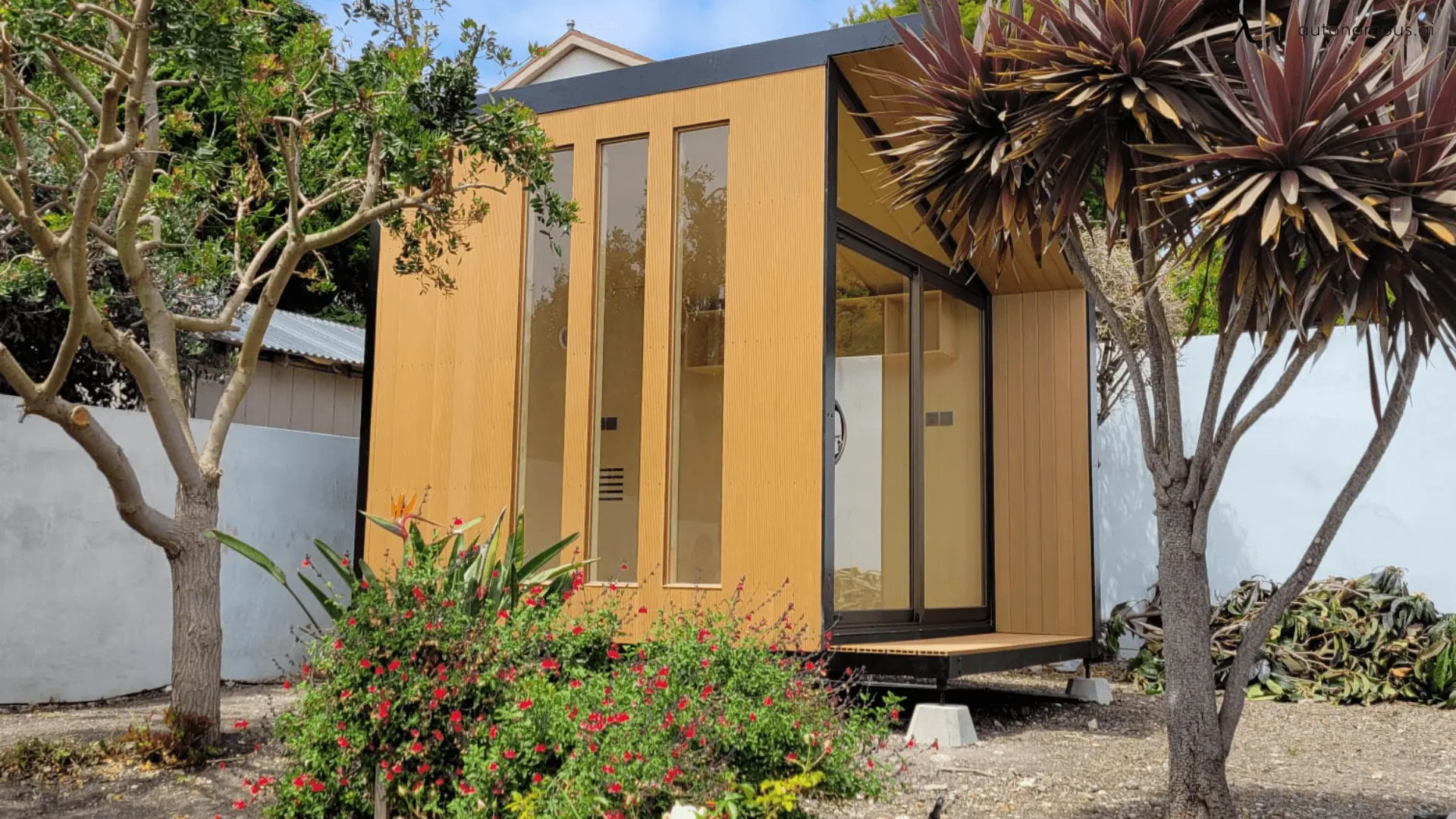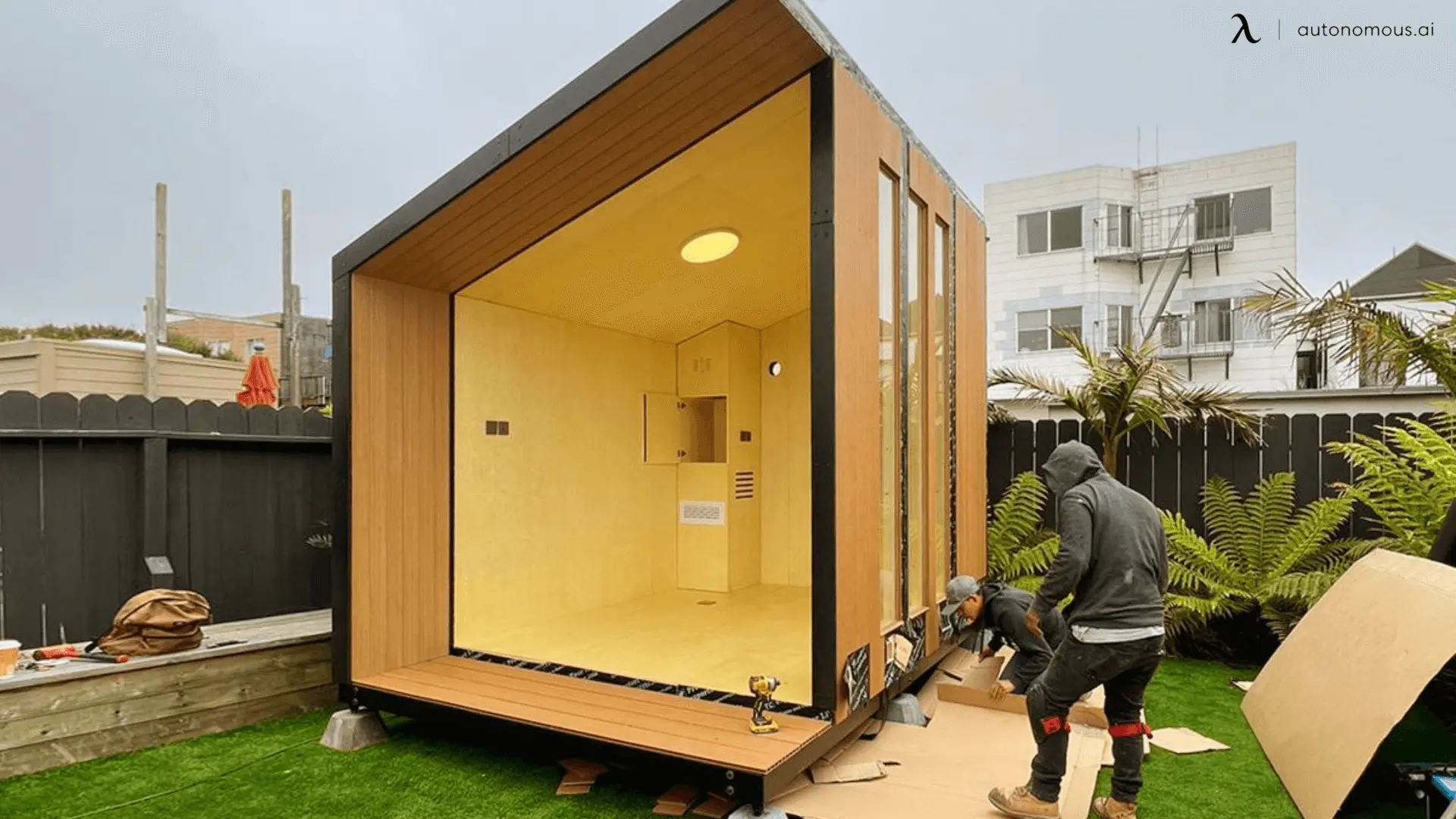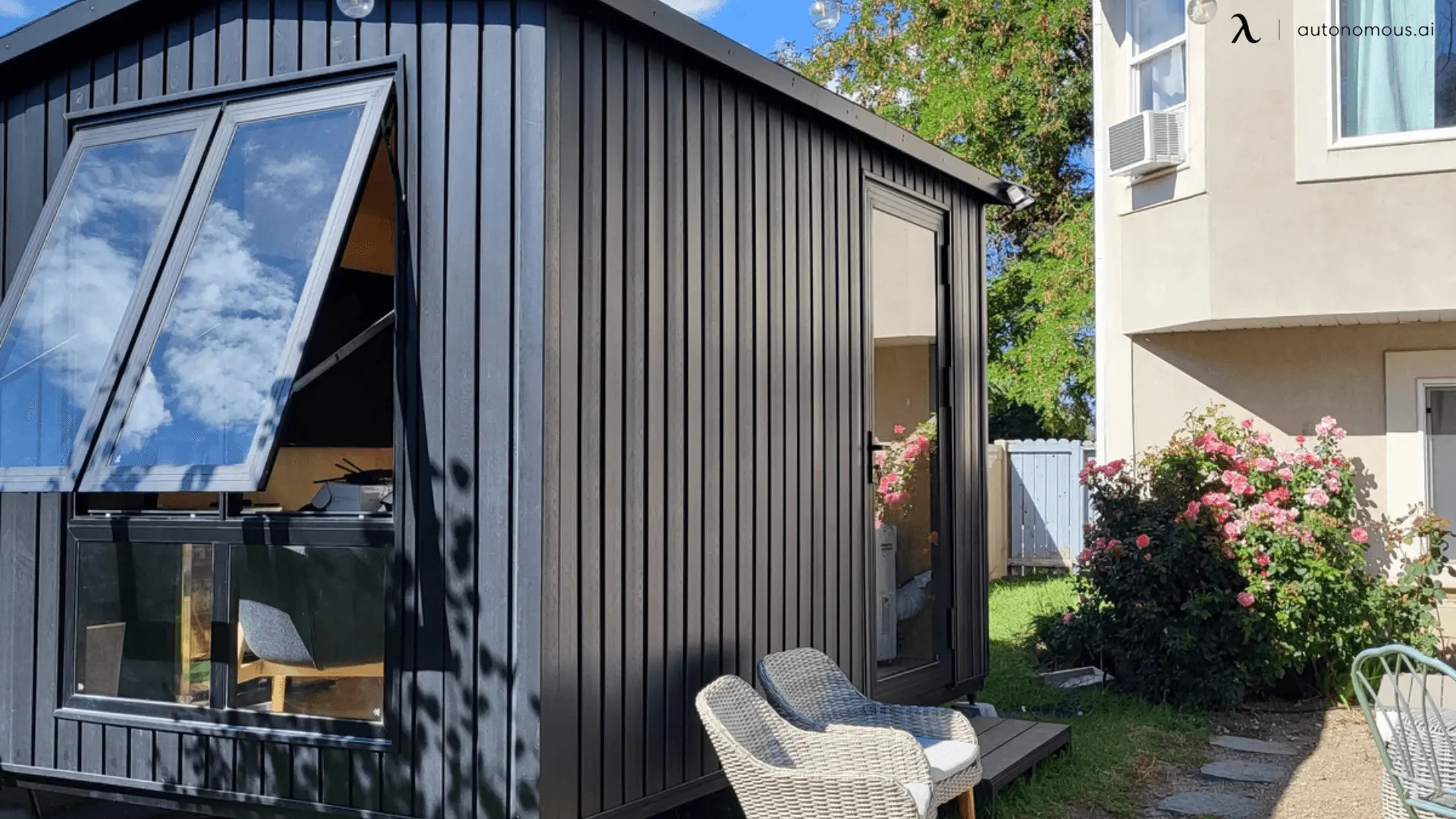
Prefab Homes in New Mexico: Sustainable, Affordable, and Modern Living
Table of Contents
Prefab homes have emerged as an increasingly popular housing solution across the U.S., especially in areas like New Mexico, where vast landscapes, affordable land, and a desire for sustainable living converge. Whether you're looking for a modern prefab home to suit a contemporary lifestyle or a prefab tiny home for minimalistic living, New Mexico offers a wide range of options.
In this guide, we’ll explore the benefits of choosing prefab homes in New Mexico, how they provide an affordable and eco-friendly living solution, and dive into the top builders in the state that can bring your prefab home vision to life.
Why Choose Prefab Homes in New Mexico?
New Mexico’s stunning landscapes, diverse climates, and affordable land make it an ideal place for prefab homes. Prefabricated homes are built in a factory setting and then assembled on-site, which reduces construction time and costs. For those interested in minimizing their environmental impact, prefab homes also come with customizable options for energy-efficient features like solar panels for shed, water recycling, and high-quality shed insulation, perfect for off-grid living.
Whether you're interested in modern prefab homes or smaller, more affordable prefab tiny homes, this housing solution allows you to build a home that fits your lifestyle and budget. For more on prefab homes, explore this guide on New Mexico modular homes.
Types of Prefab Homes
Modular Homes: These homes are built in sections (modules) and assembled on-site. They are highly customizable, making them a great choice for families or those looking for larger homes with modern amenities. If you’re seeking inspiration for your future modular home, explore these modular home ideas with a range of design concepts, from minimalist layouts to sustainable, eco-friendly designs, helping you create a modular home tailored to your specific needs and lifestyle.
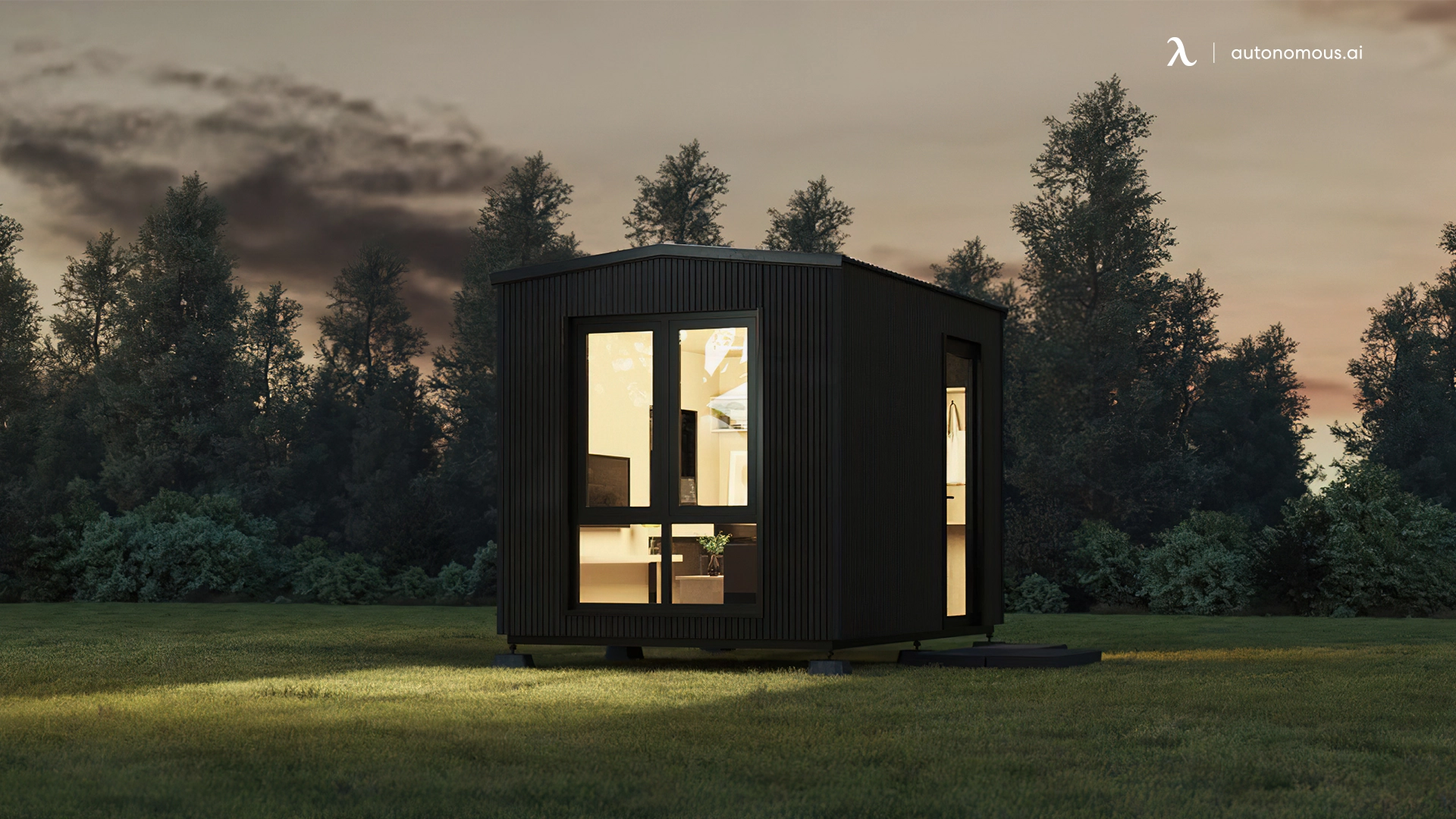
Prefab Tiny Homes: For those looking to downsize home and live more sustainably, prefab tiny homes in New Mexico offer a smaller, more affordable option. These homes typically range from 100 to 400 square feet but can be fully equipped with all the essentials for comfortable living.
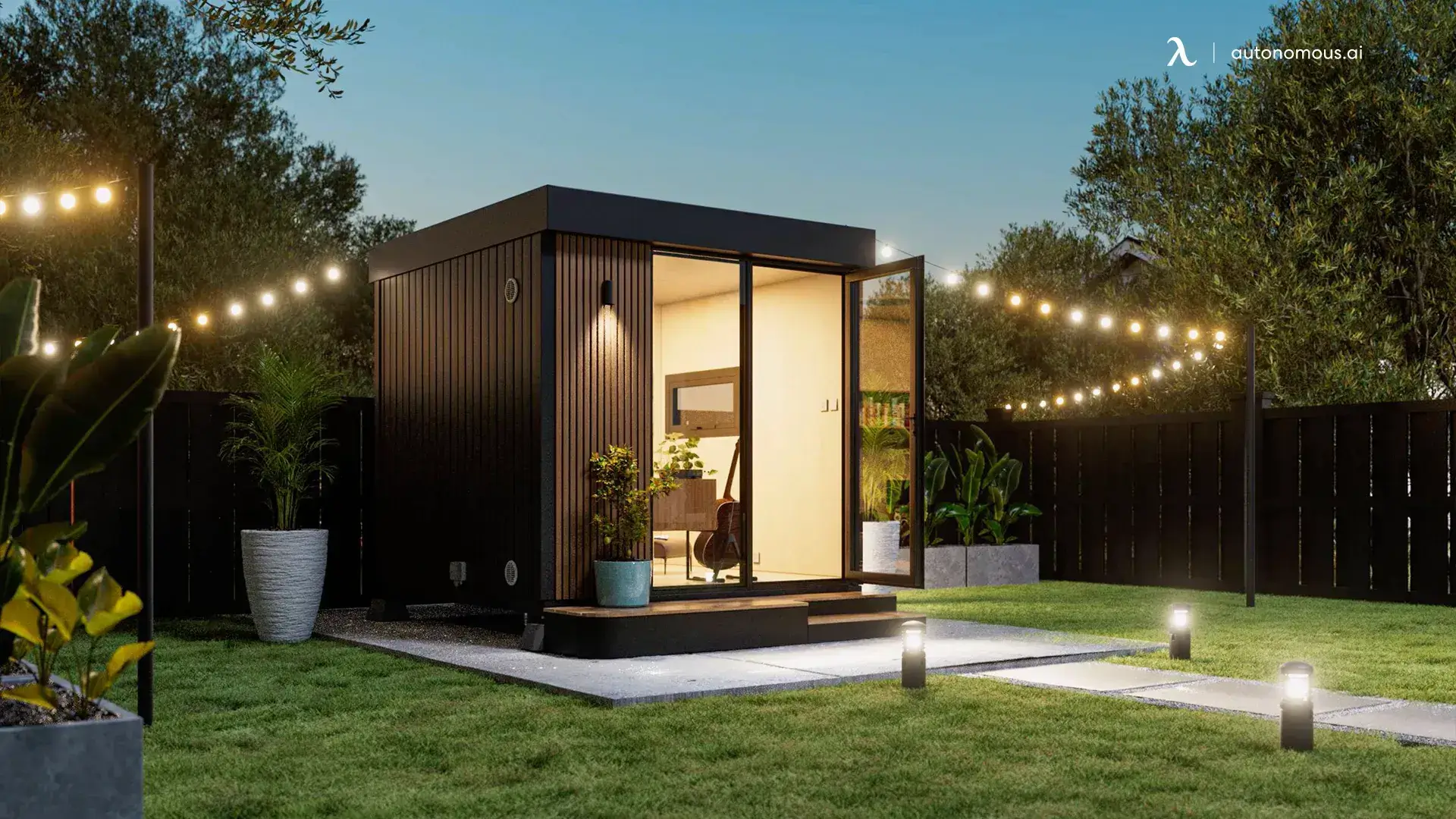
Manufactured Homes: Often confused with modular homes, manufactured homes are built entirely in a factory and transported to the home site. They offer a budget-friendly housing solution but have fewer customization options compared to modular homes.
If you're considering a manufactured home in California, explore the specific regulations and benefits of this housing option in the state in this guide on manufactured homes in California. Alternatively, for those exploring manufactured homes in different regions, check out this resource on Florida manufactured homes to learn more about safety and building standards.
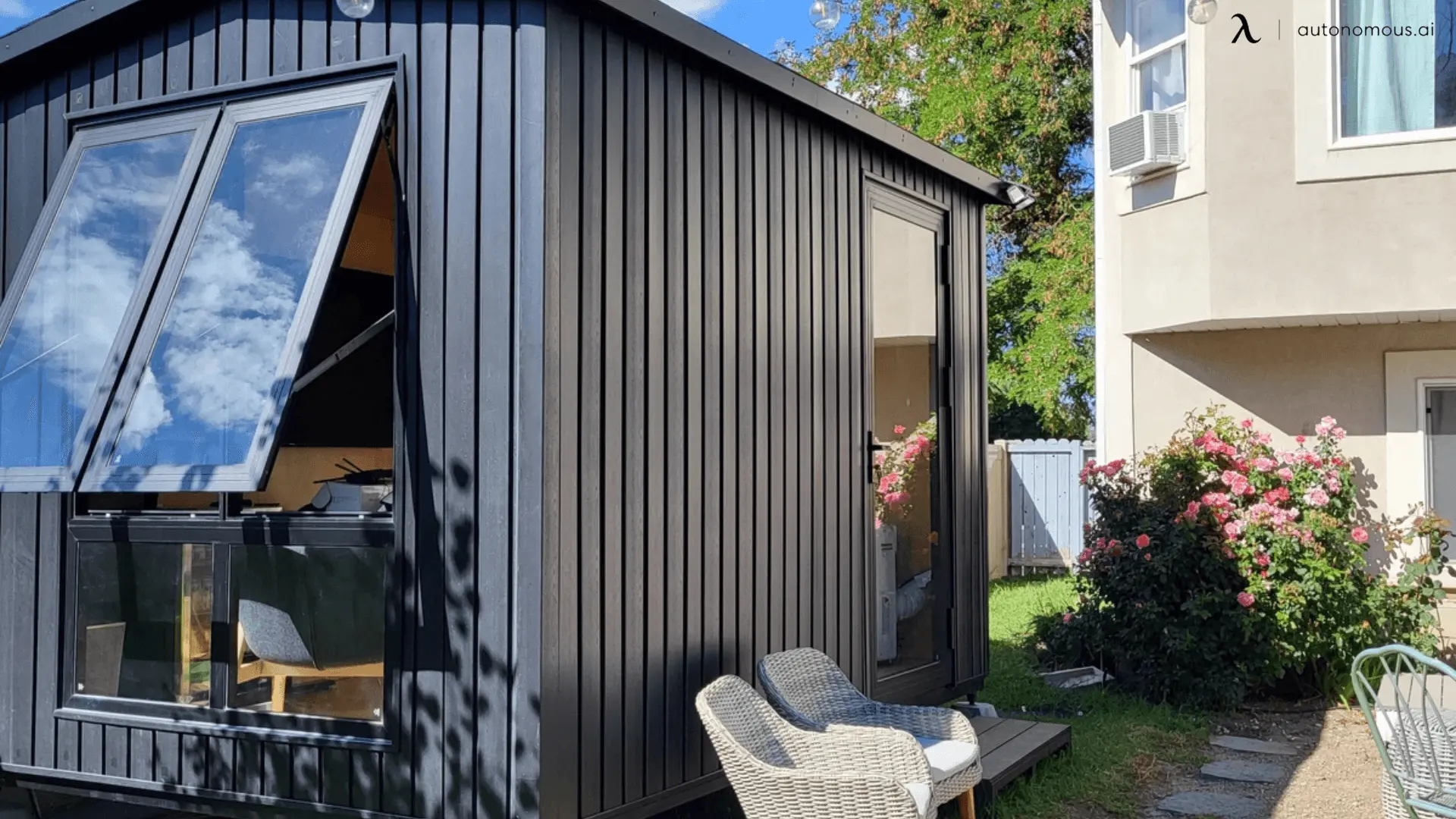
Top 5 Prefab Home Builders That Ship to New Mexico
Finding a prefab home builder that not only specializes in quality construction but also ships to New Mexico can expand your options for finding the perfect home. These five prefab builders are well-known for their expertise, design options, and ability to ship to New Mexico.
1. Method Homes
Method Homes is a leading prefab builder specializing in high-end, sustainable modular homes. They offer a range of modern and customizable designs that blend style with eco-friendly construction. Method Homes is known for building homes that meet rigorous energy efficiency standards and can handle a variety of climates, making them a perfect fit for New Mexico’s diverse environment. They ship homes across the U.S., including New Mexico.
2. Deltec Homes
Known for their energy-efficient and hurricane-resistant prefab homes, Deltec Homes offers unique round homes and more traditional modular designs. Their homes are built with sustainability in mind, utilizing eco-friendly materials and renewable energy options. Deltec Homes ships nationwide, and their ability to adapt their designs to different climates makes them an excellent option for New Mexico’s varying weather conditions.
3. Connect Homes
Connect Homes is renowned for its sleek, modern prefab homes that are designed to be affordable and sustainable. Their modular homes are shipped in fully assembled modules, making the process efficient and quick. With a focus on clean, minimalist design and green building practices, Connect Homes is an excellent choice for those seeking a contemporary prefab home. They ship to New Mexico and across the western U.S.
4. Plant Prefab
Plant Prefab offers highly customizable, modern homes with a focus on sustainability and energy efficiency. They provide a range of prefab home designs that cater to various styles, from minimalistic tiny homes to larger family homes. Plant Prefab is committed to using eco-friendly materials and energy-efficient technologies, ensuring that each home is built to meet environmental standards. They ship homes to New Mexico and other states across the country.
5. Clayton Homes
Clayton Homes is one of the largest prefab home manufacturers in the U.S., offering both modular and manufactured homes. Their homes are highly customizable, and Clayton is known for incorporating modern amenities like smart home technology and energy-efficient systems. Clayton Homes ships nationwide, including to New Mexico, and provides a variety of options to suit different budgets and preferences.
Cost of Building a Prefab Home in New Mexico
One of the key benefits of prefab homes is their affordability compared to traditional site-built homes. On average, a modern prefab home in New Mexico costs between $150 to $250 per square foot, depending on the level of customization, materials, and additional features like energy efficiency upgrades. For those interested in prefab tiny homes, the price can be even lower, making it an attractive option for budget-conscious buyers.
Additionally, prefab homes typically take 30% to 50% less time to build, allowing homeowners to move in sooner and avoid the delays often associated with traditional construction.
The cost of prefab homes can vary not only by the size and complexity of the home but also by the region in which it is built. In areas like the Bay Area, ADU and prefab home costs tend to be higher due to local market conditions. For an in-depth breakdown of ADU costs in the Bay Area, see this guide on ADU cost Bay Area.
Similarly, costs for granny pods (a type of tiny home) are affected by location and customization options. If you’re exploring this route, here’s a detailed look at granny pods cost to help you plan your budget.
For those considering building in California, where ADUs are highly encouraged as a solution to the housing shortage, the costs can vary significantly between cities. Whether you're building in Sacramento or Los Angeles, each region presents its own pricing factors. Check out the detailed cost breakdown for ADUs in specific areas like ADU cost California, ADU cost Sacramento, or ADU cost Los Angeles to get a clearer picture of what you can expect.
In contrast, building a small prefab home or shipping container home in New Mexico can be much more affordable. Tiny homes, for example, offer a low-cost housing alternative. If you're curious about the cost of a tiny home, this guide on how much does a small house cost provides a helpful overview.
For those exploring unique, eco-friendly housing options like shipping container homes, using a shipping container home cost calculator can give you a clearer estimate of how much your project might cost, factoring in design, materials, and labor.
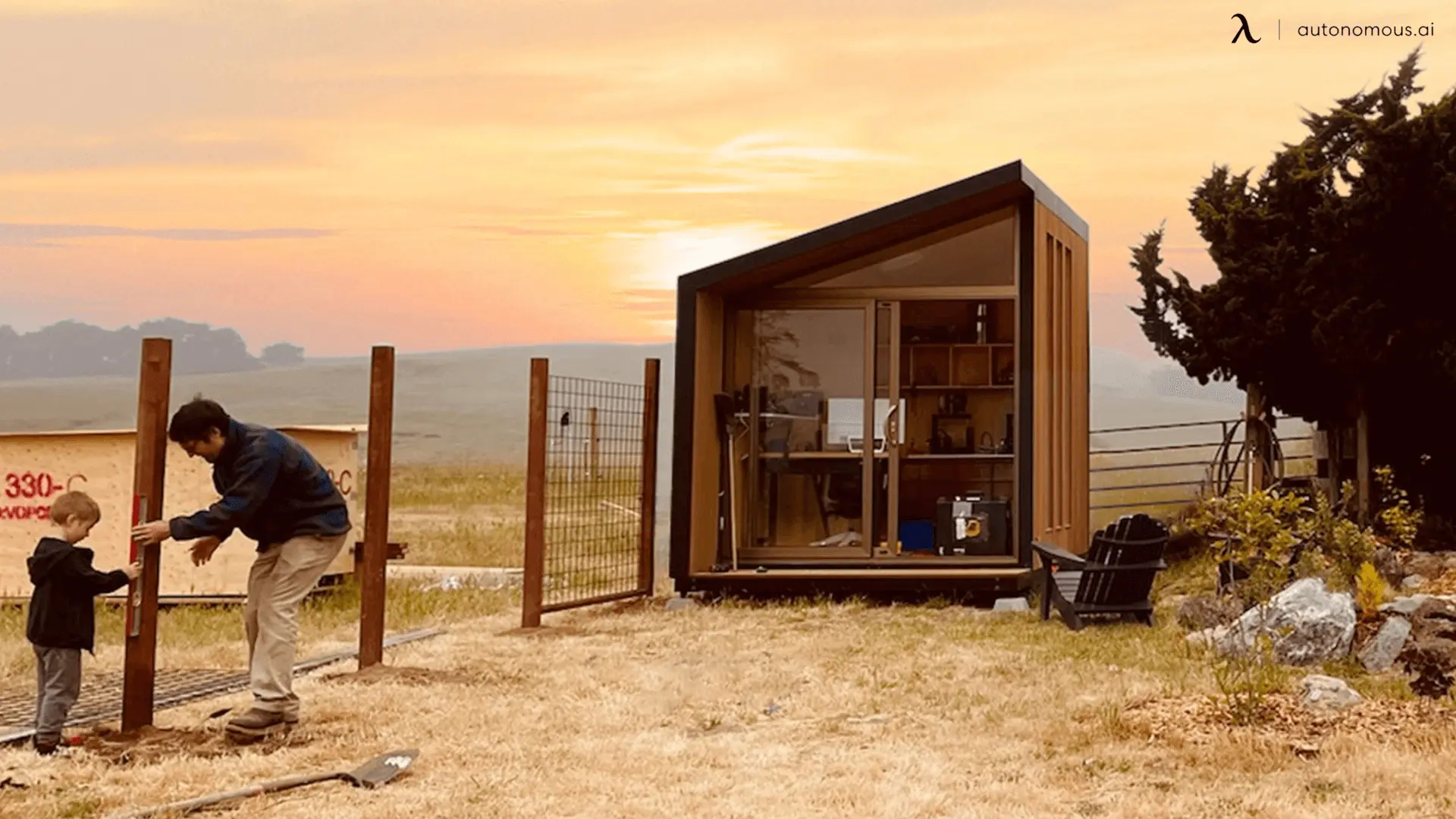
Zoning and Building Regulations in New Mexico
Before deciding to build or place a prefab home in New Mexico, it’s crucial to understand the zoning and building regulations that apply. These regulations ensure that the construction and placement of prefab homes comply with local ordinances, building codes, and environmental requirements. While prefab homes offer a streamlined and cost-effective housing solution, they are still subject to state and local laws that may affect where and how they can be built.
1. Zoning Restrictions
Zoning regulations vary significantly depending on the county, city, or municipality within New Mexico. Zoning laws dictate where different types of housing can be located and what kinds of structures are permitted. Here are key factors to consider:
Urban Areas
In more densely populated areas like Albuquerque or Santa Fe, zoning regulations may be stricter. Prefab homes may only be allowed in specific residential zones, and there may be restrictions on the type (e.g., modular vs. manufactured) or size of the prefab home.
Rural Areas
In rural counties, zoning tends to be more lenient, making it easier to place prefab homes, including prefab tiny homes. In many rural areas, large plots of land allow for more flexibility in building alternative housing like off-grid prefab homes, Earthships, or modern modular homes.
Setback Requirements
Zoning laws often include setback regulations, which dictate the distance prefab homes must be from property lines, roads, and neighboring structures. These requirements can vary depending on the zone, so it’s important to check local ordinances.
In cities like Los Angeles and other parts of California, specific setback requirements must be met when building ADUs. For more details on ADU setbacks, check out this guide on ADU setback requirements in Los Angeles and a broader look at ADU setbacks in California. Although these are specific to California, similar principles may apply to ADUs in New Mexico, so it’s essential to consult local ordinances for detailed guidelines.
Height and Size Limitations
Some municipalities may have limitations on the height or square footage of prefab homes. This is particularly important for those considering prefab tiny homes in New Mexico, as minimum size requirements may apply in certain zones.
Be sure to review local regulations for minimum size requirements by referring to tiny house dimensions. Additionally, height restrictions can apply. Learn more about these limits through tiny house height limit. For those considering ADUs, understanding the maximum allowable size is also key. Here's a helpful guide on how big can an ADU be in California.
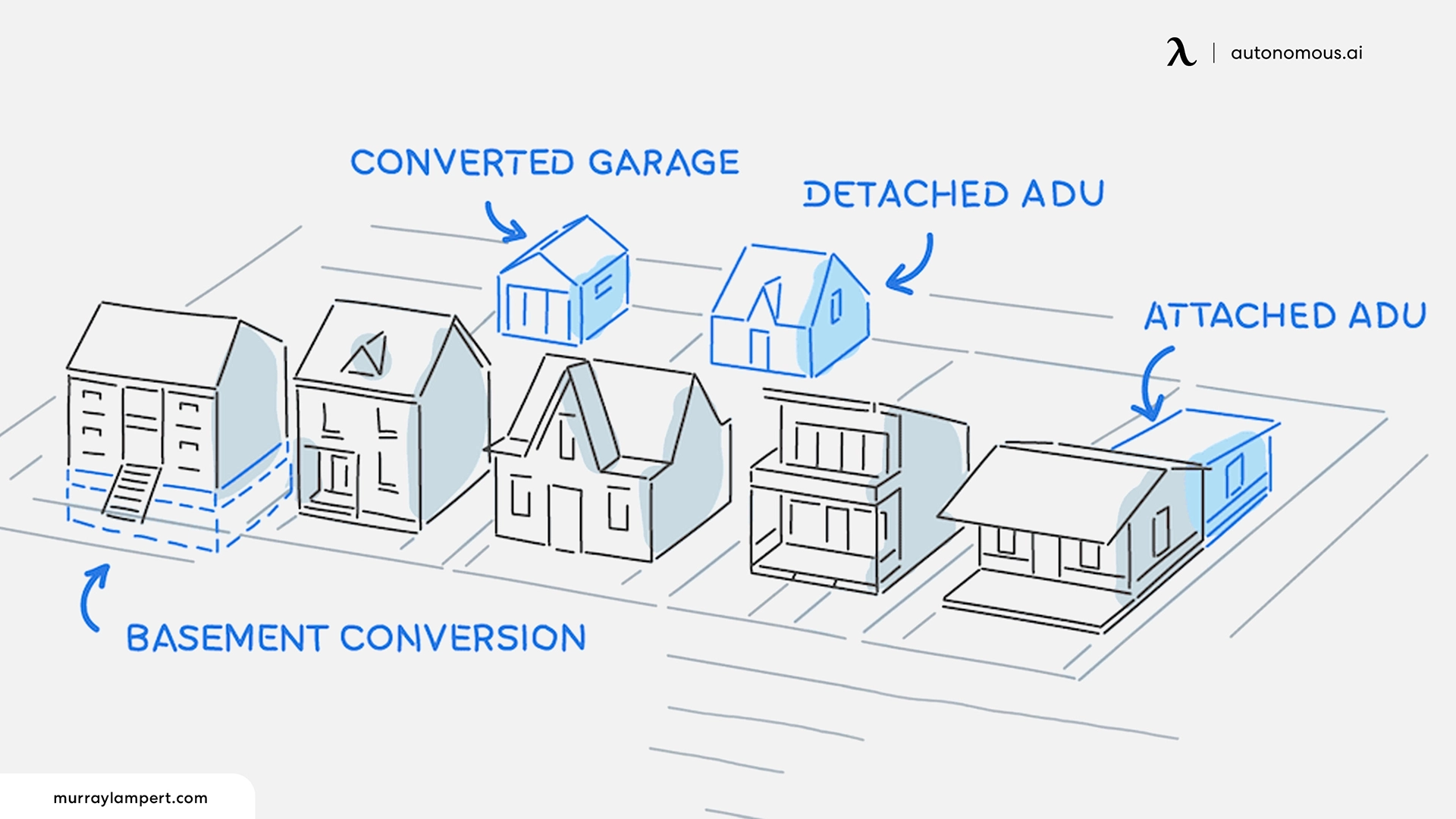
2. Building Codes
Prefab homes, including both modular and manufactured homes, are subject to strict building codes to ensure safety, durability, and energy efficiency. In New Mexico, prefab homes must comply with federal and state building standards:
Modular Homes: These homes are built to the same standards as traditional, site-built homes and must comply with the New Mexico Building Code, which is based on the International Building Code (IBC). Modular homes are subject to inspections at both the factory and the site to ensure compliance with local regulations.
Manufactured Homes: Manufactured homes are governed by the U.S. Department of Housing and Urban Development (HUD) standards. These homes must comply with HUD’s Manufactured Home Construction and Safety Standards, which regulate everything from structural strength to energy efficiency. These homes are inspected at the factory but may also be subject to additional inspections once installed in New Mexico.
Energy Efficiency Requirements: Many modern prefab homes in New Mexico are built with energy efficiency in mind, and state building codes may require specific standards for insulation, windows, and heating/cooling systems. Homes built at higher altitudes may need to comply with more stringent insulation and weatherproofing standards to handle temperature extremes. For practical tips on ensuring your home or shed can withstand harsh weather conditions, check out this guide on how to weatherproof a shed, which provides useful strategies that can be applied to prefab structures as well.
3. Foundation and Utility Requirements
Most prefab homes in New Mexico are required to be placed on a permanent foundation to be classified as real property. This can affect financing and resale value, so it’s important to understand these requirements:
Permanent Foundations: For both modular and manufactured homes, a permanent foundation is typically required in many counties, especially in urban and suburban areas. A permanent foundation provides more stability and longevity, making the home compliant with building codes.
Utility Hookups: If you’re placing your prefab home in a rural or off-grid area, you may need to make special arrangements for utilities such as water, electricity, and sewage. In some areas, zoning regulations may require homes to be connected to the local utility grid, while in others, off-grid solutions like solar power and septic systems are allowed.
4. Permitting Process
Obtaining the necessary permits is one of the most important steps in building a prefab home in New Mexico. The permitting process ensures that your home complies with local zoning and building regulations. Here’s what to expect:
Building Permits: You’ll need to obtain a building permit from the local city or county government before construction or placement begins. This ensures that your prefab home complies with local building codes, including electrical, plumbing, and structural standards.
For those building in California, the process for obtaining a permit is crucial to ensuring compliance with stringent statewide building codes. You can explore more details in this comprehensive guide on California building permits. For example, in San Jose, California, there are specific requirements for ADU permits, you can read more about the process in this guide on San Jose ADU permit. In Chula Vista, obtaining a building permit for an ADU involves complying with specific local regulations and guidelines, check out Chula Vista building permit for ADUs.
For those planning to build in Riverside County or Long Beach, California, there are specific regulations and permit costs associated with ADUs. For a detailed breakdown of these costs, refer to the guides on Riverside County ADU permit cost and Long Beach ADU permit cost.
Utility Permits: If your home requires utility hookups, you may also need permits for electrical, water, and sewage connections. In rural areas, this may involve obtaining special permits for well drilling, septic systems, or off-grid solar installations.
Environmental Permits: Depending on the location of your prefab home, you may need to obtain environmental permits, particularly if the land is near sensitive areas like national forests, wetlands, or protected wildlife habitats. Environmental impact assessments may be required for large-scale prefab projects.
5. HOA Regulations
If you plan to place your prefab home in a community governed by a Homeowners Association (HOA), you’ll need to comply with the HOA’s rules and restrictions. HOAs often have specific guidelines regarding the appearance, size, and placement of homes within their communities, and prefab homes may not always be allowed. Be sure to check with the HOA before purchasing land or beginning construction.
6. Special Considerations for Prefab Tiny Homes
Tiny homes, including prefab tiny homes in New Mexico, often face additional zoning challenges. In some areas, tiny homes may be classified as recreational vehicles (RVs), which restricts where they can be legally placed. If you’re planning to live in a prefab tiny home, make sure it complies with local zoning laws and is classified as a permanent dwelling, rather than a temporary structure like an RV.
Minimum Square Footage: Some municipalities have minimum square footage requirements for residential dwellings. Tiny homes that do not meet these requirements may need special zoning variances to be legally placed. If you're curious about smaller living spaces, check out this post on tiny homes in New Mexico.
ADUs (Accessory Dwelling Units): In some areas, prefab tiny homes may be classified as Accessory Dwelling Units (ADUs), which are smaller homes placed on the same property as a primary residence. ADUs are becoming more accepted in cities like Albuquerque, but you’ll need to ensure your tiny home complies with the local ADU regulations.
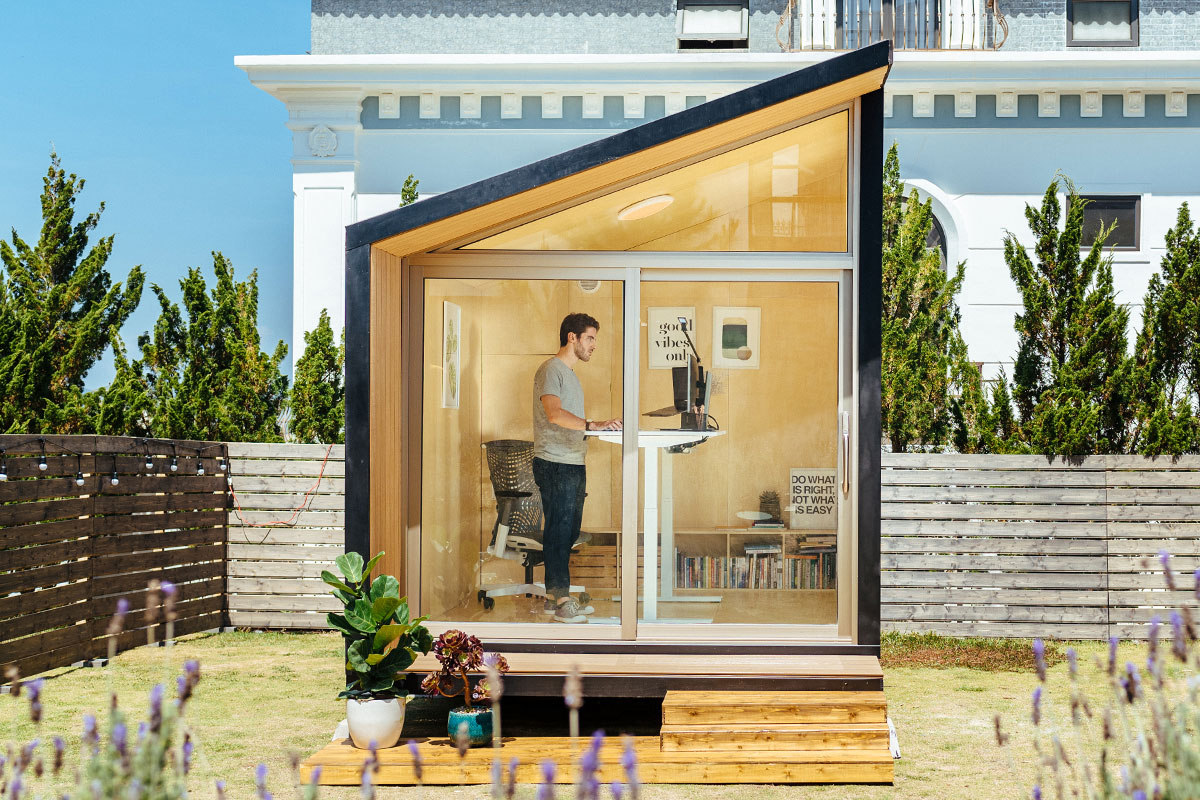
WorkPod
| Overall size | 8.5’W x 12’L x 11’H |
| Floorspace | 102 square feet |
| Ceiling height | 6.8’ to 9.3’ |
| Weight capacity | 2.9 tons |
| Door & Window dimensions, material (include glass) | Main door: 7.5’W x 6.8'H 3 windows: 1.1’W x 7.9’H Window material: Wooden frame, 5/16” tempered glass, composite wood cover Door material: Anodized aluminum frame, 5/16” tempered glass |
| Siding, roof, floor & balcony material | Siding: Plywood 1/2”, wooden frame, honeycomb paper, plywood 3/8”, bitume, housewrap, vinyl siding Roof: Roof shingles Floor: Plywood Balcony: Composite wood |
| Electrical devices | 1 RCB (Residual current breaker) 3 Wall outlet (Universal wall sockets) 1 Ceiling light switch 1 Ceiling light 1 Ventilator switch 1 Ventilator 66ft power cable with 2 connectors |
| Power input | Maximum voltage: 110V AC (US standard) Maximum current: 25A Maximum power dissipation: 2750W |
| Interior furniture | Unfurnished option: 1 Bookshelf, 1 Electrical Cabinet Furnished option: 1 Autonomous Desk, 1 ErgoChair Ultra, 1 Monitor Arm, 1 Cable Tray, 1 Filing Cabinet, 1 Anti-Fatigue Mat, 1 Bookshelf, 1 Electrical Cabinet |
| Compatible with | Portable air conditioner: A/C units with dimensions smaller than 22” L x 20” W x 88” H and a 5.9” vent hole diameter will fit well. Heater: A small personal heater is more than sufficient. |
- Handy homeowners
- Professionals who need a quiet, dedicated space to work from home
- Freelancers who require a focused environment away from household distractions
- Permit-free
- Zero foundation preparation
- Built with weatherproof and soundproof materials
- Pre-wired with ambient lighting and outlets
- Ready in 3 days
- Requires sufficient outdoor space which may not be available to everyone
- May require additional setup for internet and other connectivity
FAQs
1. Are prefab homes allowed in all areas of New Mexico?
Prefab homes are allowed in most areas of New Mexico, but zoning regulations vary by county and municipality. While rural areas may be more flexible, urban and suburban regions could have stricter zoning laws that regulate where prefab homes can be placed. It’s essential to check with local authorities to confirm the specific regulations for your area.
2. What is the average construction time for a prefab home in New Mexico?
The construction time for a prefab home in New Mexico is generally shorter than that of traditional homes. On average, it can take anywhere from 2 to 6 months, depending on the size, customization options, and complexity of the project. Much of the construction occurs off-site in a controlled environment, which significantly reduces weather-related delays.
3. Can prefab homes withstand New Mexico's weather conditions?
Yes, prefab homes can be designed to withstand the diverse weather conditions of New Mexico, including extreme heat, cold, and high winds. Many prefab homes are built with energy-efficient insulation and materials that protect against temperature fluctuations. Additionally, prefab homes can be customized with weatherproofing features to suit high-altitude or desert environments.
4. What are the financing options for prefab homes in New Mexico?
Financing a prefab home in New Mexico can be done through traditional mortgage loans if the home is placed on a permanent foundation. Some lenders also offer specific loan programs for modular or manufactured homes. It's important to confirm with lenders whether they cover the type of prefab home you plan to build, as some may not finance certain manufactured homes or mobile units.
5. Are prefab homes energy-efficient?
Prefab homes can be highly energy-efficient, often surpassing traditional homes in terms of eco-friendly features. Many prefab builders in New Mexico offer customization options like solar panels, energy-efficient windows, and superior insulation, which help reduce energy consumption and lower utility bills. These homes can also be designed to meet Energy Star standards or similar energy certifications.
6. Can I customize the design of my prefab home in New Mexico?
Yes, one of the major advantages of prefab homes is the ability to customize designs to fit your needs and preferences. Whether you’re opting for a larger modular home or a prefab tiny home, you can work with builders to choose layouts, finishes, and eco-friendly features. Many builders offer a variety of floor plans, exterior designs, and interior finishes to suit different styles and budgets.
7. What utilities need to be considered when placing a prefab home in New Mexico?
When placing a prefab home in New Mexico, you'll need to consider essential utilities like water, electricity, and sewage. In rural areas, you may need to install a septic system and rely on well water, while urban areas will require connections to city water and sewage systems. For homes in off-grid locations, solar panels and water-harvesting systems can be installed to reduce reliance on public utilities.
8. Is there a resale market for prefab homes in New Mexico?
The resale market for prefab homes in New Mexico is growing as these homes become more popular due to their affordability and energy efficiency. Like traditional homes, the resale value of a prefab home depends on location, condition, and the quality of construction. Prefab homes placed on permanent foundations often hold their value better and are easier to sell compared to manufactured homes or mobile homes.
9. What permits are required for a prefab home in New Mexico?
To build a prefab home in New Mexico, you’ll typically need to obtain building permits, electrical permits, and plumbing permits, depending on the location. If you’re building in a city or town, additional zoning permits may also be required to ensure compliance with local regulations. The specific requirements will vary by county, so it’s essential to consult local authorities for a complete list of permits.
10. Can prefab homes be built in New Mexico’s historic districts?
Building a prefab home in a historic district in New Mexico may be more complicated due to stricter building codes and design regulations meant to preserve the area’s architectural integrity. In such cases, prefab homes might need to meet specific aesthetic guidelines or use particular materials to blend with the surroundings. It’s best to consult with the local historic preservation office to understand the specific regulations in historic districts.
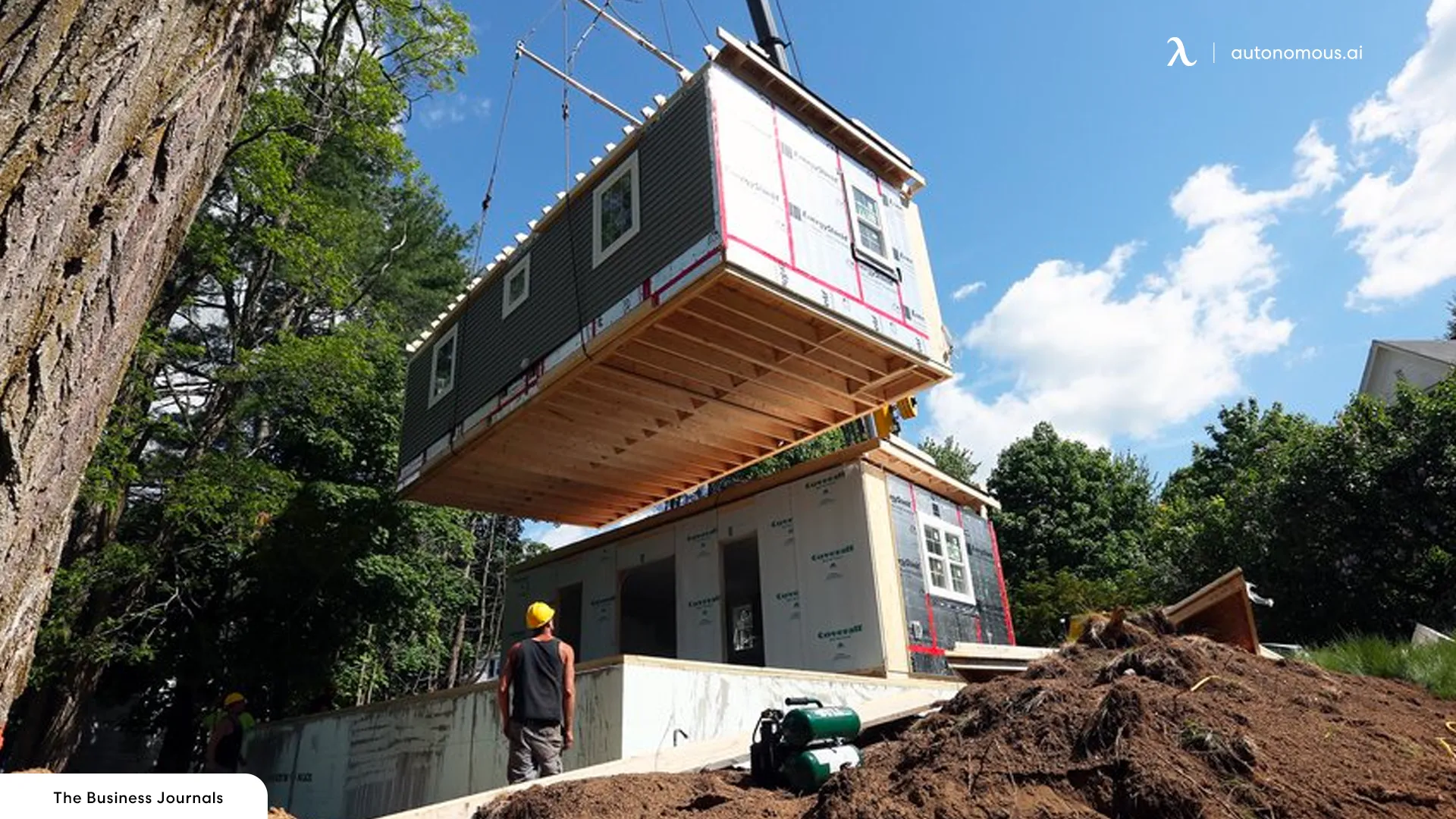
Conclusion
Whether you're drawn to the affordability of prefab tiny homes or the sleek design of modern prefab homes, New Mexico is a great place to explore prefab living. With a variety of top builders to choose from, ranging from Homes Direct to New Mexico Earthships, there’s a prefab option for every lifestyle and budget. The benefits of reduced construction time, lower costs, and eco-friendly features make prefab homes a smart choice for those looking to embrace modern, sustainable living.
If you’re ready to make the switch to prefab living, consider reaching out to one of New Mexico’s top builders to start your journey.
Spread the word
.svg)


